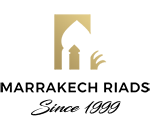
A brief history of Moroccan riads
A riad is a traditional Moroccan house specifically known for its enclosed garden and courtyard. Riads are very common in Morocco, they used to be homes for the wealthy merchants and traders. Nowadays, riads all over the kingdom of Morocco have been converted into luxury guest houses for the sake and enjoyment of local and foreign travelers.
These traditional buildings called “Riads”played a major role in making Morocco one of the best touristic destinations in the world. Experiencing the true Moroccan way of living by staying in a Riad instead of a regular hotel, is a dazzling tourist experience for visitors from all around the world.
WHAT IS A RIAD?
A Riad is a traditional Moroccan house or palace with an indoor garden and courtyard. They are located within the old city “Medina” walls.
Generally, the Riad is fully enclosed inside, insulated with high-strength, neutral walls and with minimal vents to keep out heat and street noise…
Riads are also known for their open-ceiling structure. Usually, the indoor courtyard of these charming buildings is decorated with colored traditional mosaics called “ Zellij” and emphasized with marble fountains in the center with plants, trees and flowers all around.
The exquisite hotel rooms are often located on the second floor, while the common areas and dining rooms are located on the ground floor. Another Riads’ particularity is the vast rooftop terraces with panoramic views on the Medina.
THE ORIGINS OF RIAD’S ARCHITECTURE
The word “ Riad ” or “ Ryad” is derived from the Arabic word “رياض”which stands for “garden”.
The origin of the Riad structure dates back to ancient civilizations, and is a perfect mix of different architectures. Even though houses that are built around central courtyards have always existed throughout the ancient Greek-Roman world, nowadays, they’re particularly distinguished in the Moroccan-Andalusian architecture. The courtyard is also an ancient feature of Middle Eastern residential architecture, and the arranged gardens of Islamic architecture are dating back to Iranian civilization.
In Morocco, the ancient Roman city of Volubilis made a reference to the beginnings of the Riad architecture during the Idrisid dynasty.
When they invaded Spain in the eleventh century, the Idrisids sent Muslimand Jewish artisans from Spain to Morocco to showcase their knowledge in arts and craftsmanship.
FOCUS ON RIADS IN THE MOROCCAN HOUSE ARCHITECTURE:
Even though thestyle of these Riads has changed over the years to a more modern and simple style, the same overall structure is still used in today’s design.
In terms of architecture, the facade and walls of the Riad are distinguished by their privacy features. Unlike regular buildings that have openings facing the exterior, Riads’ windows are always facing the interior courtyard and garden instead, not only for providing privacy for the family, as it is supported by the islamic conception of intimacy, but also for the protection fromweather changes. This inward orientation and the absence of large exterior windows highlights the central garden and courtyard even more. The central garden is in most cases distinguished by four different squares of plants and trees, often orange or lemon, surrounding the central fountain.
The walls that are typically made from bricks, are usually covered with traditional lime plaster or tadelakt, a smooth and waterproof plaster used in Moroccan homes, and Zellijtiles.The walls can also be delicately ornamented with carved wood for a more refined style. On the plaster or wood covered walls, Moroccans craftsmen often use geometric shapes or quotesfrom the Quran in Islamic calligraphy.
Recently, the interest of foreign travelers in these types of residences has greatly increased, which resulted in a wave of renovations in cities such as Marrakech and Fez. Many of these often-dilapidated buildings have been restored to their former state and they’ve been repurposed into hotels or restaurants. The foreigns’ interest has brought new challenges to local communities, but these investments have helped the restoration of thousands of Riads all over Morocco, which resulted in some Medinas being recognized as UNESCO protected heritage.


